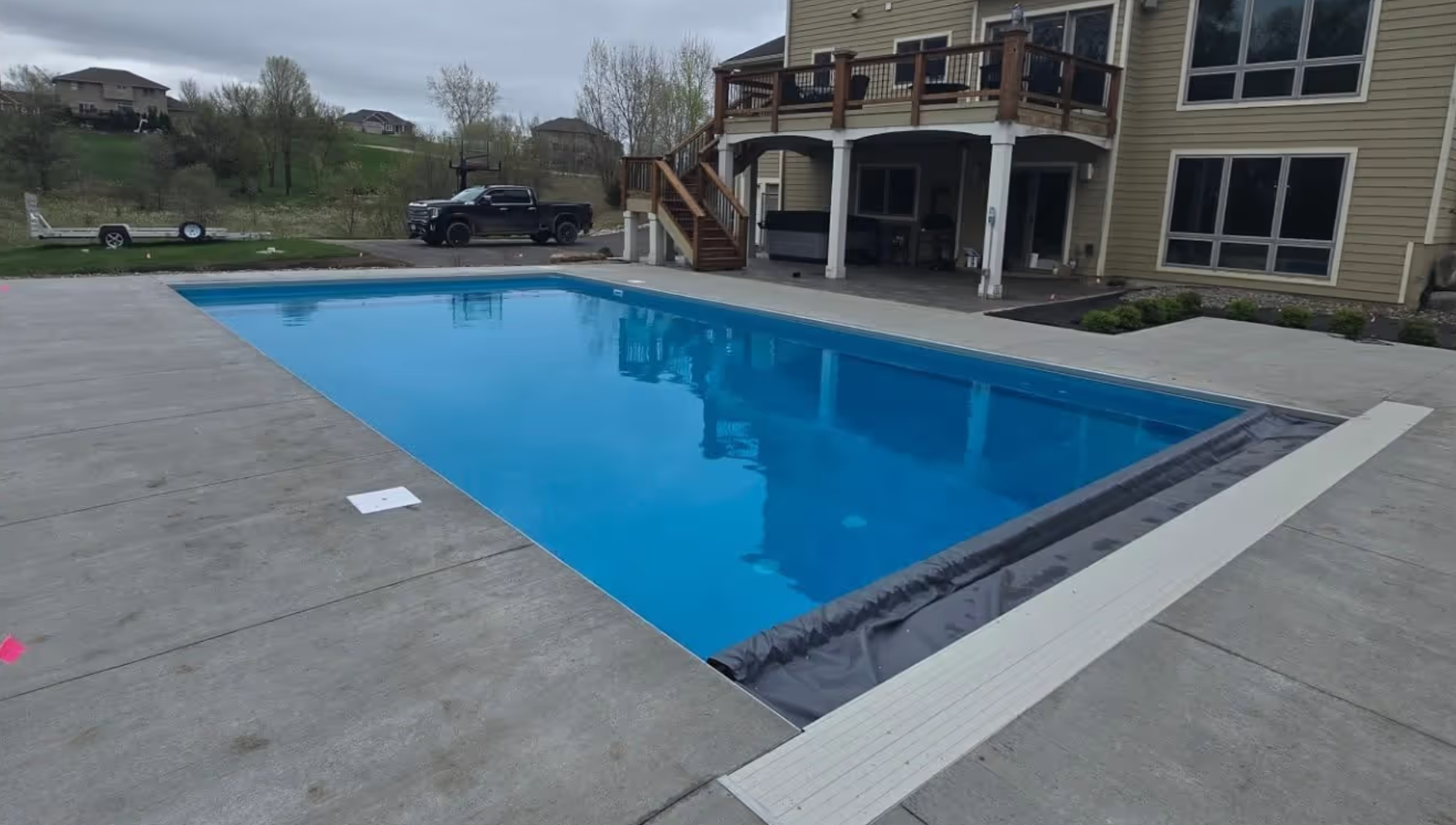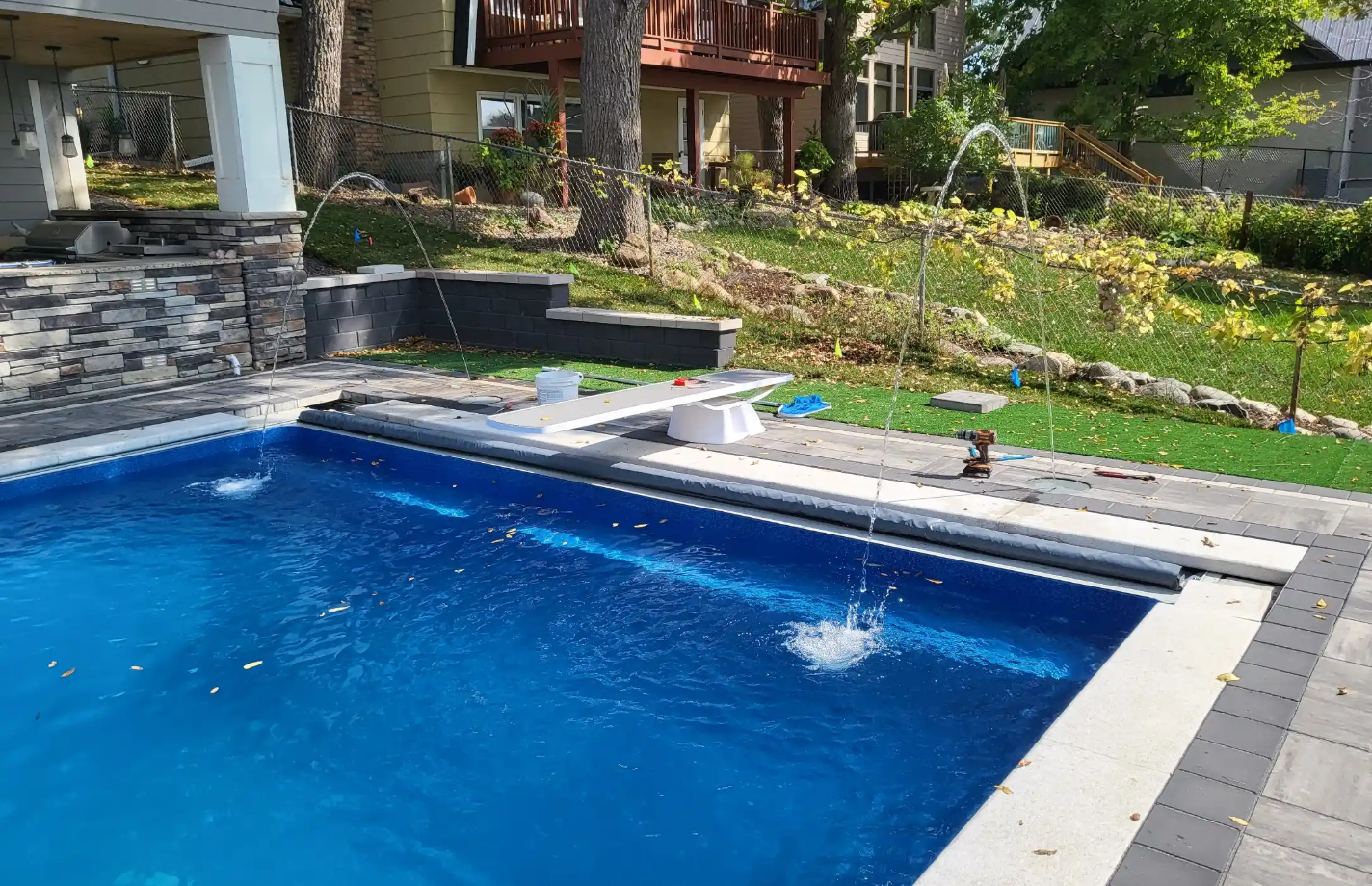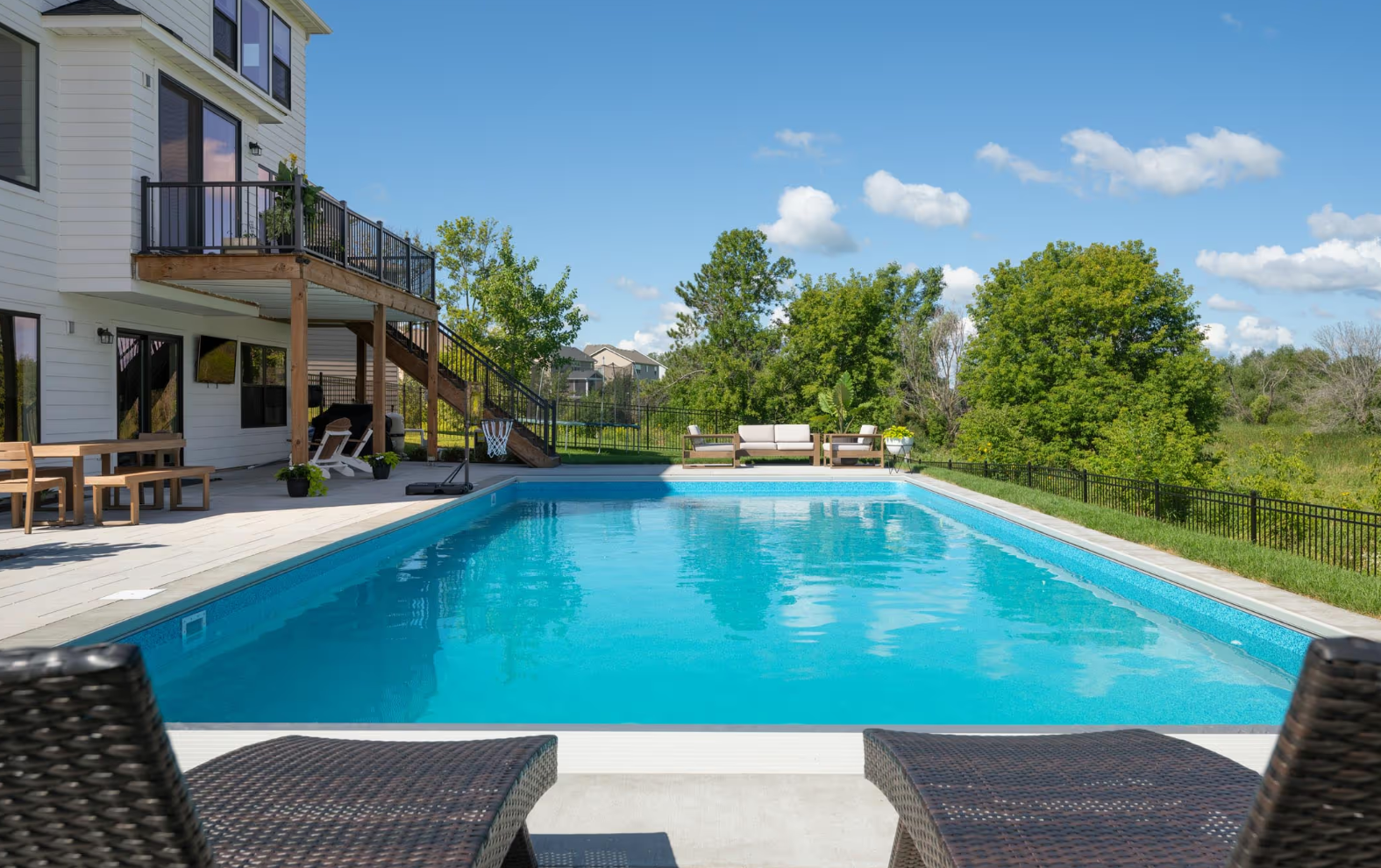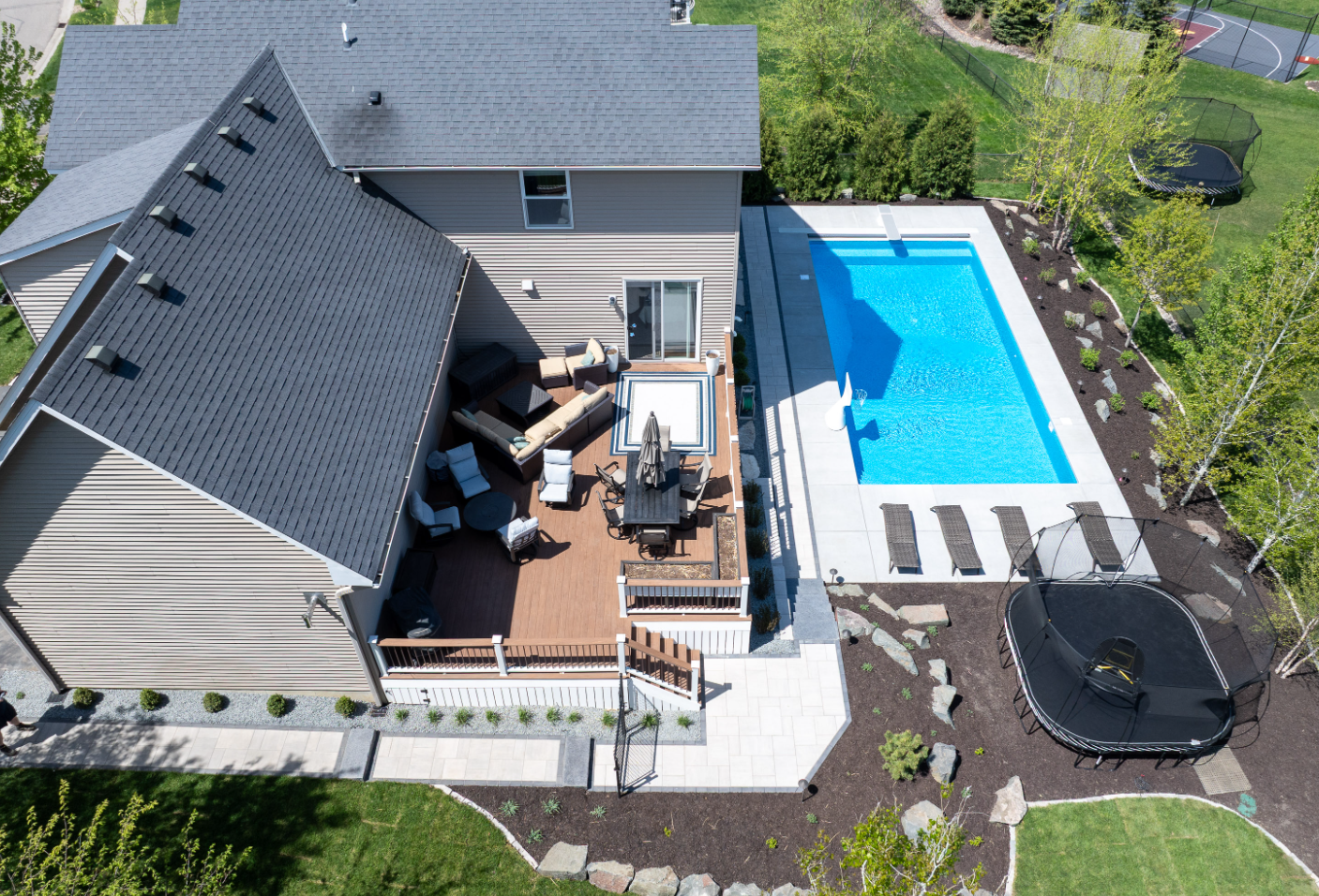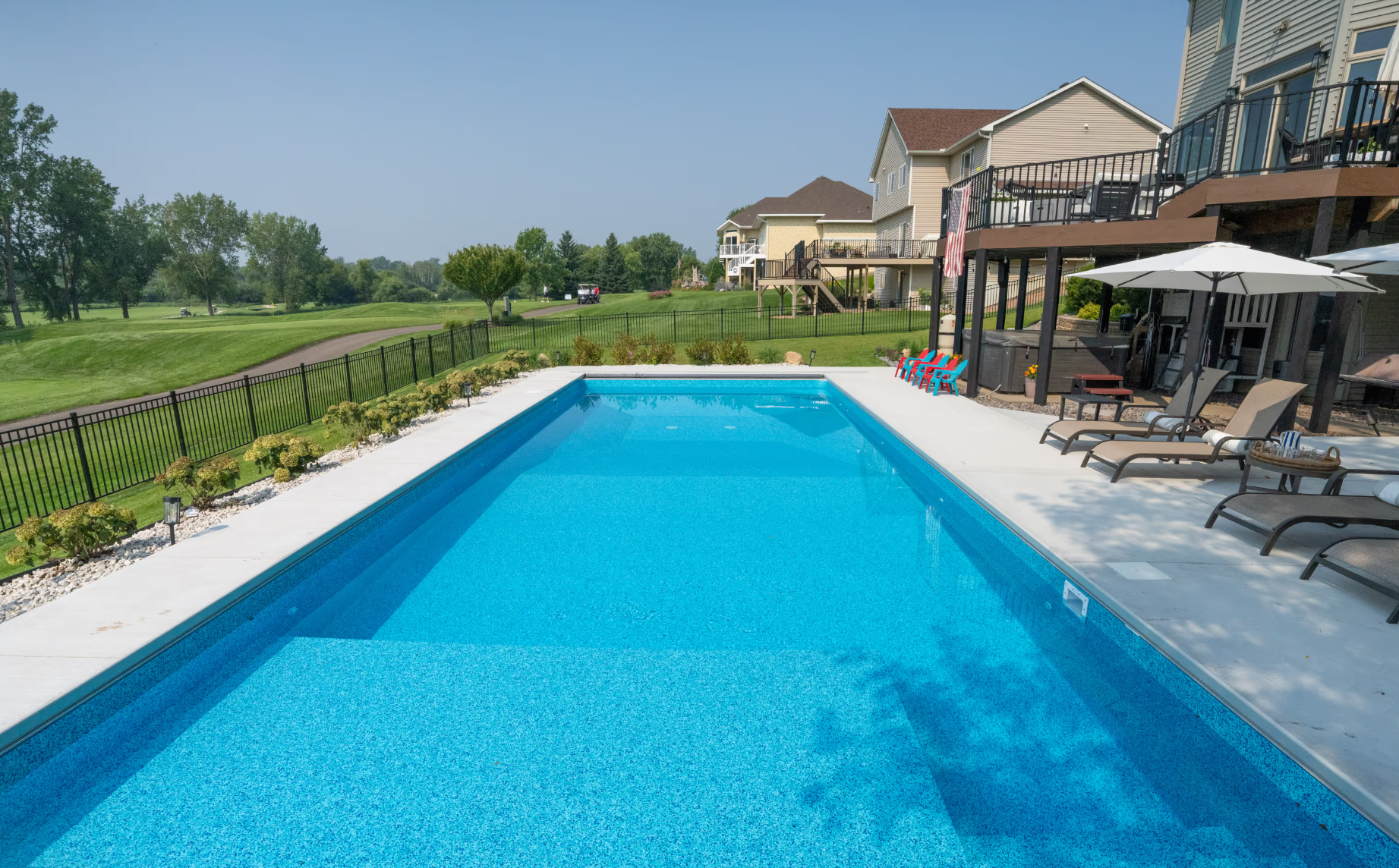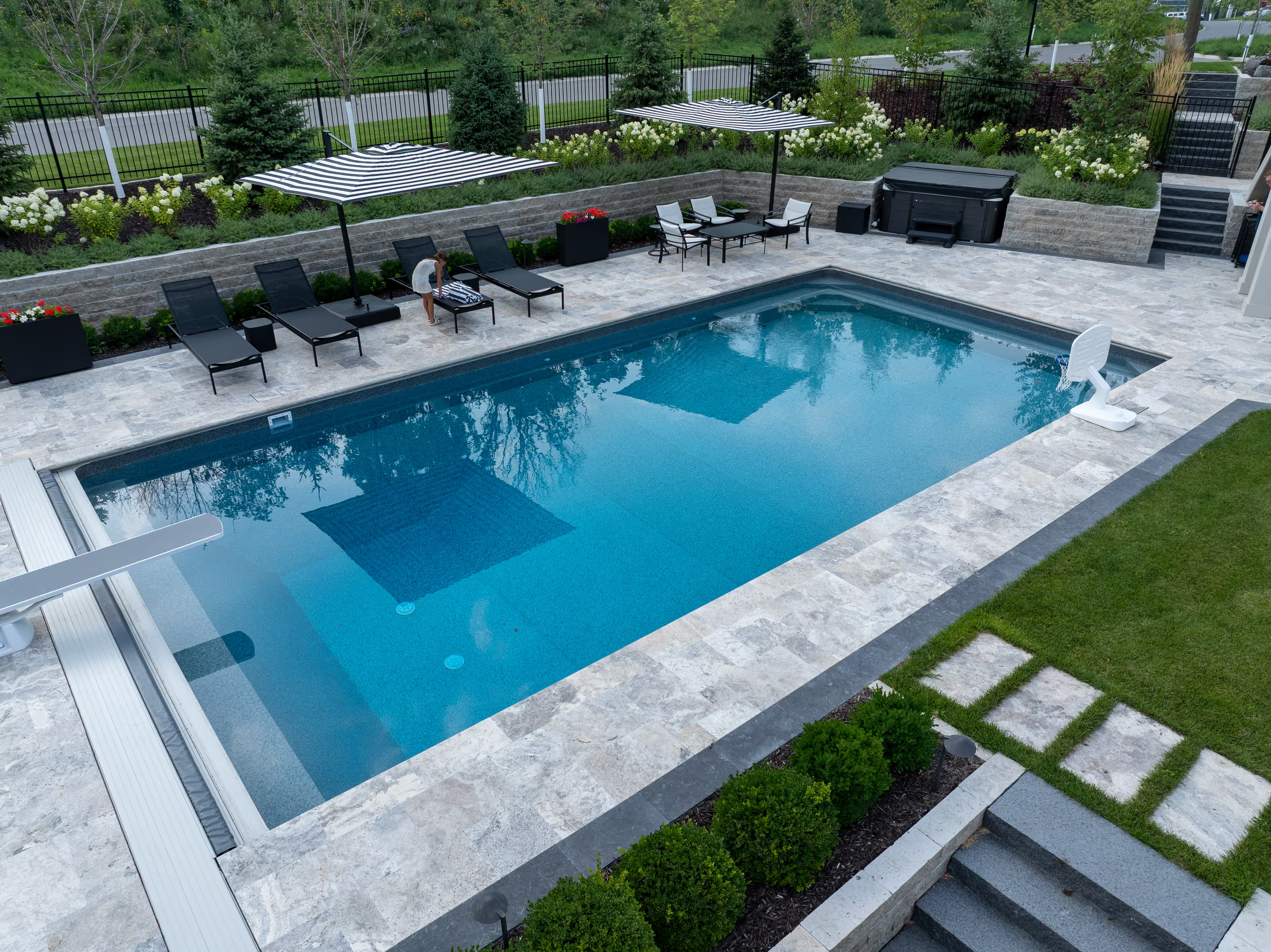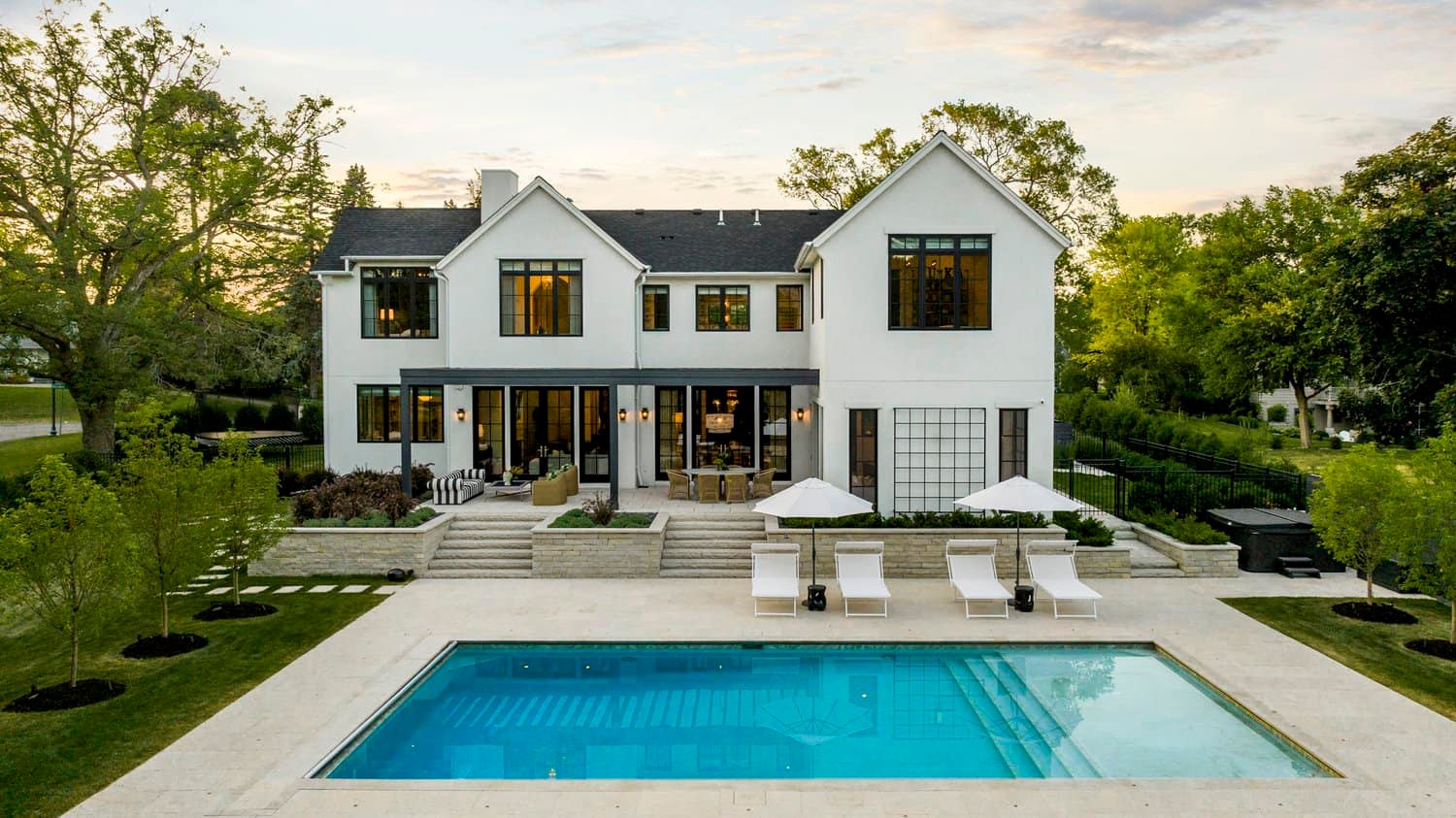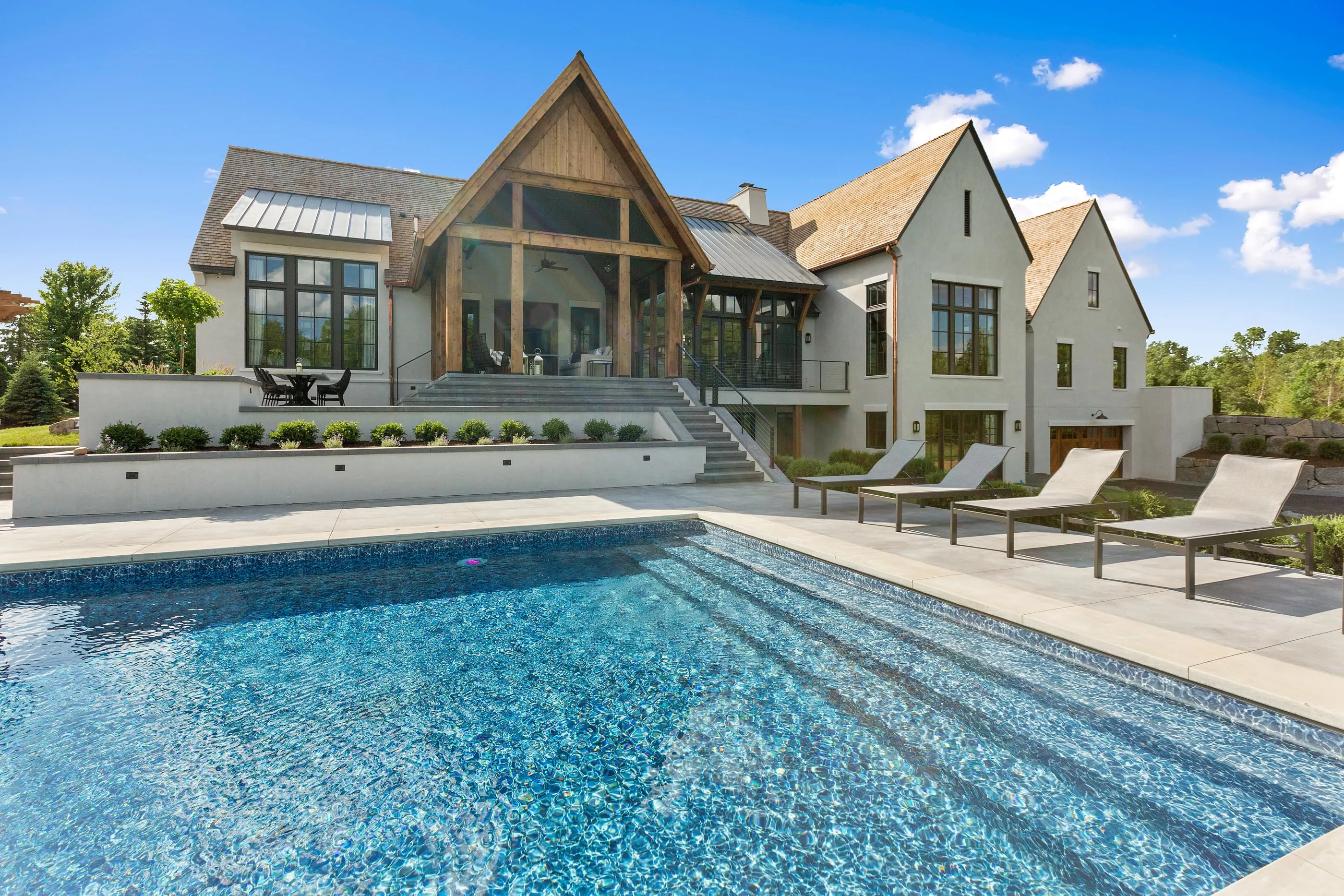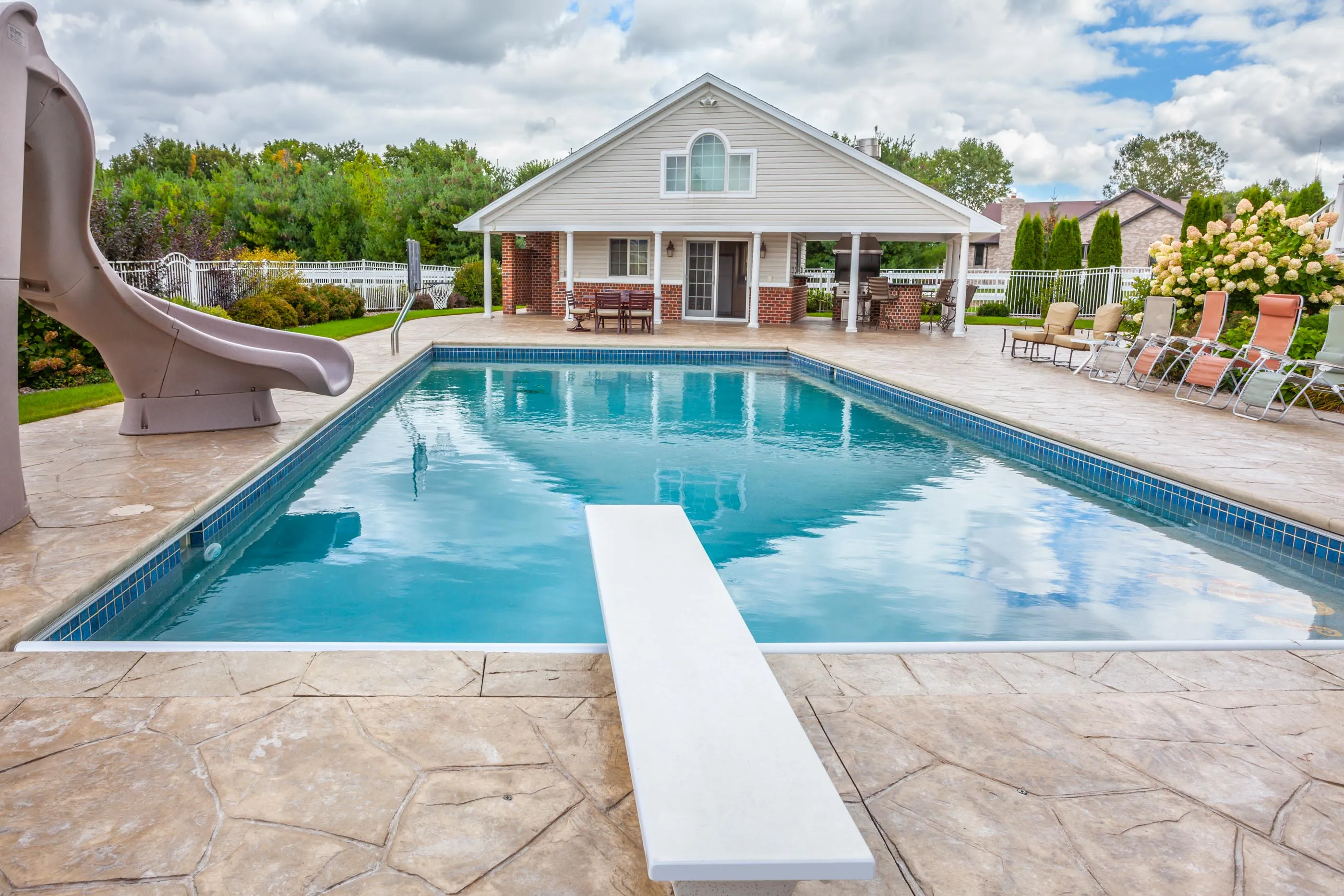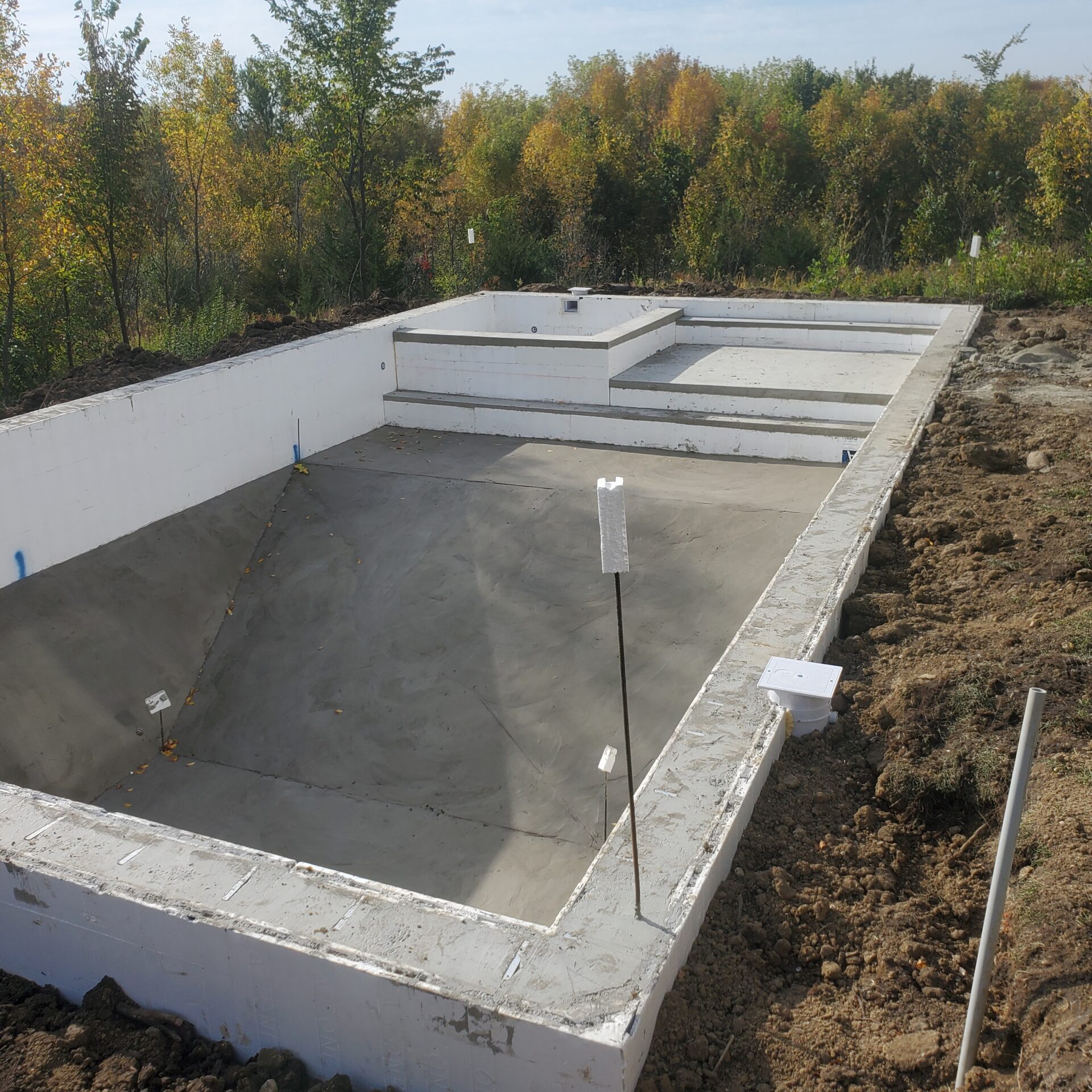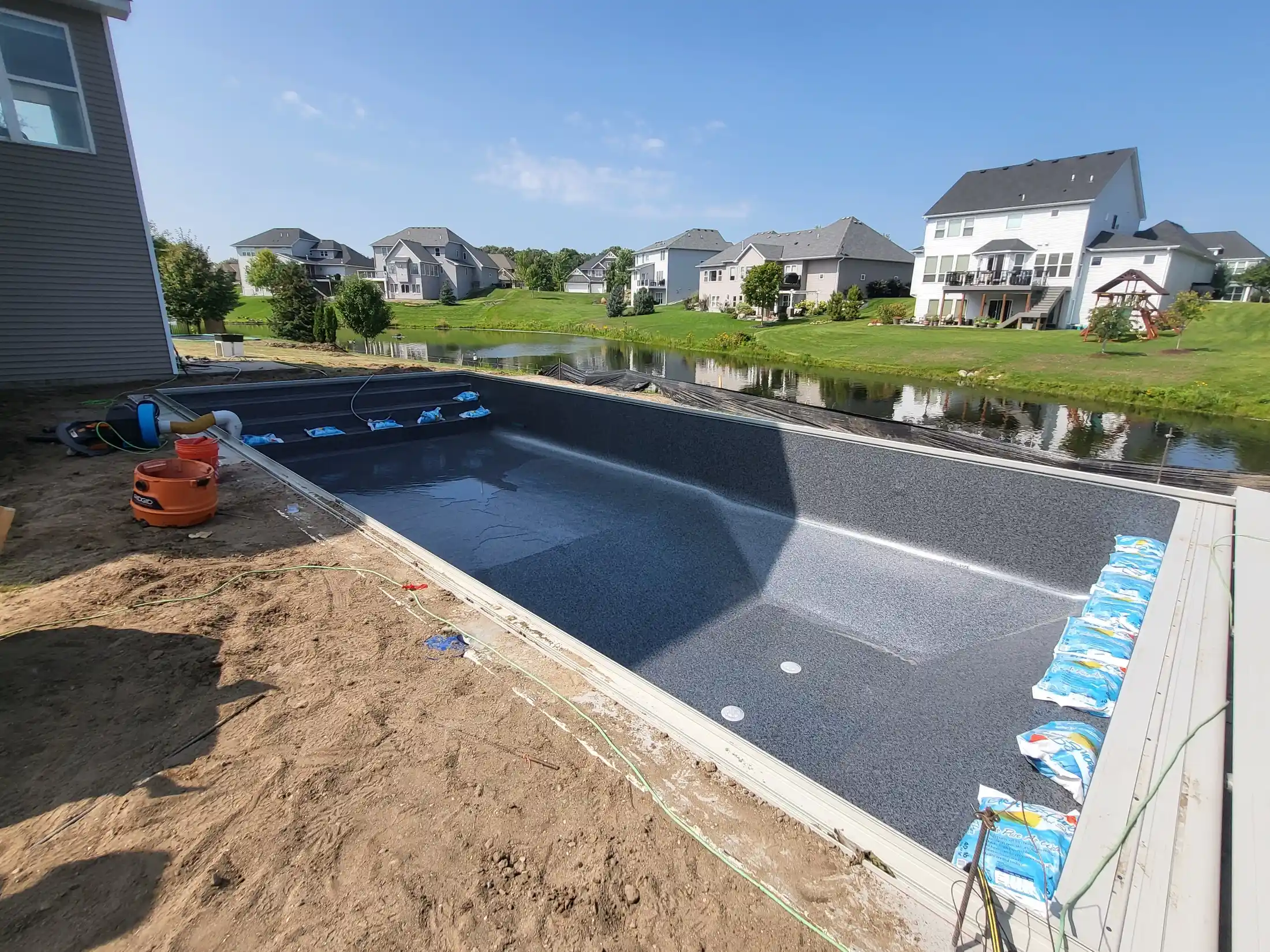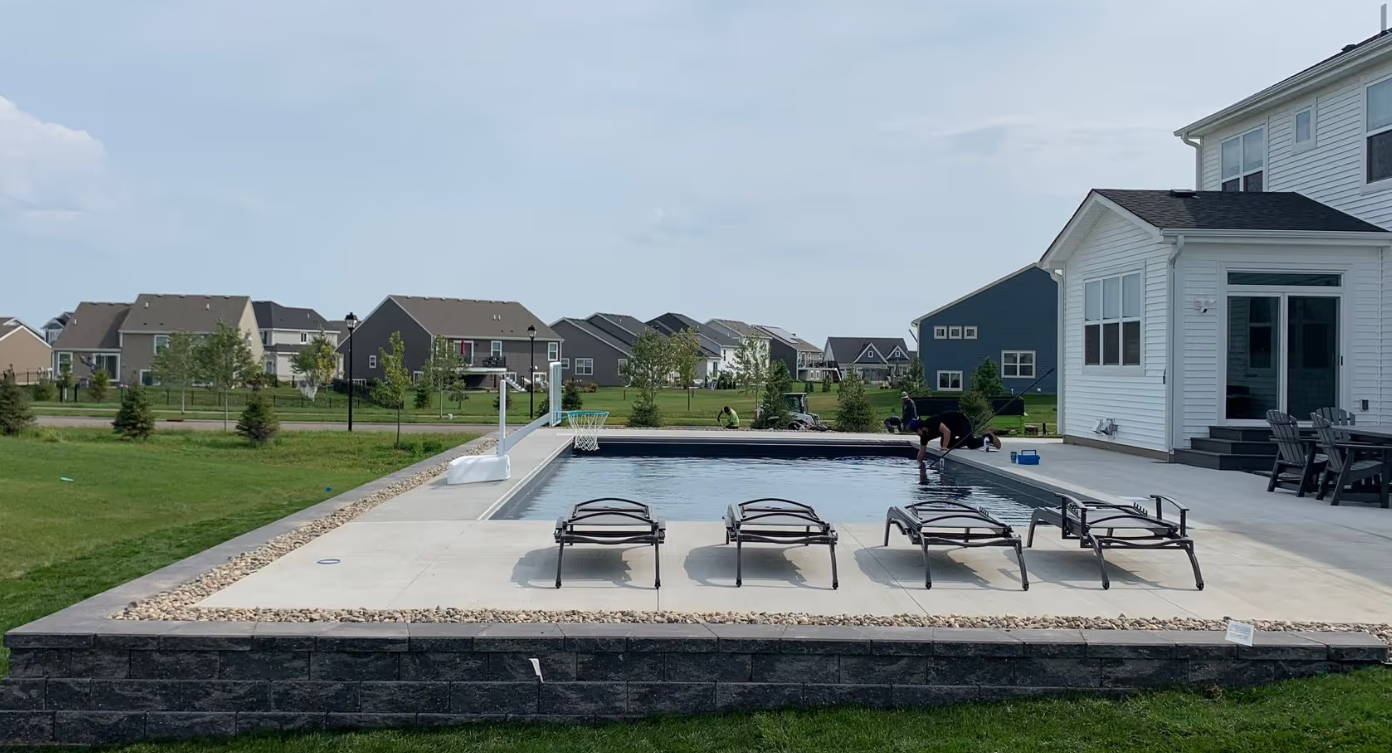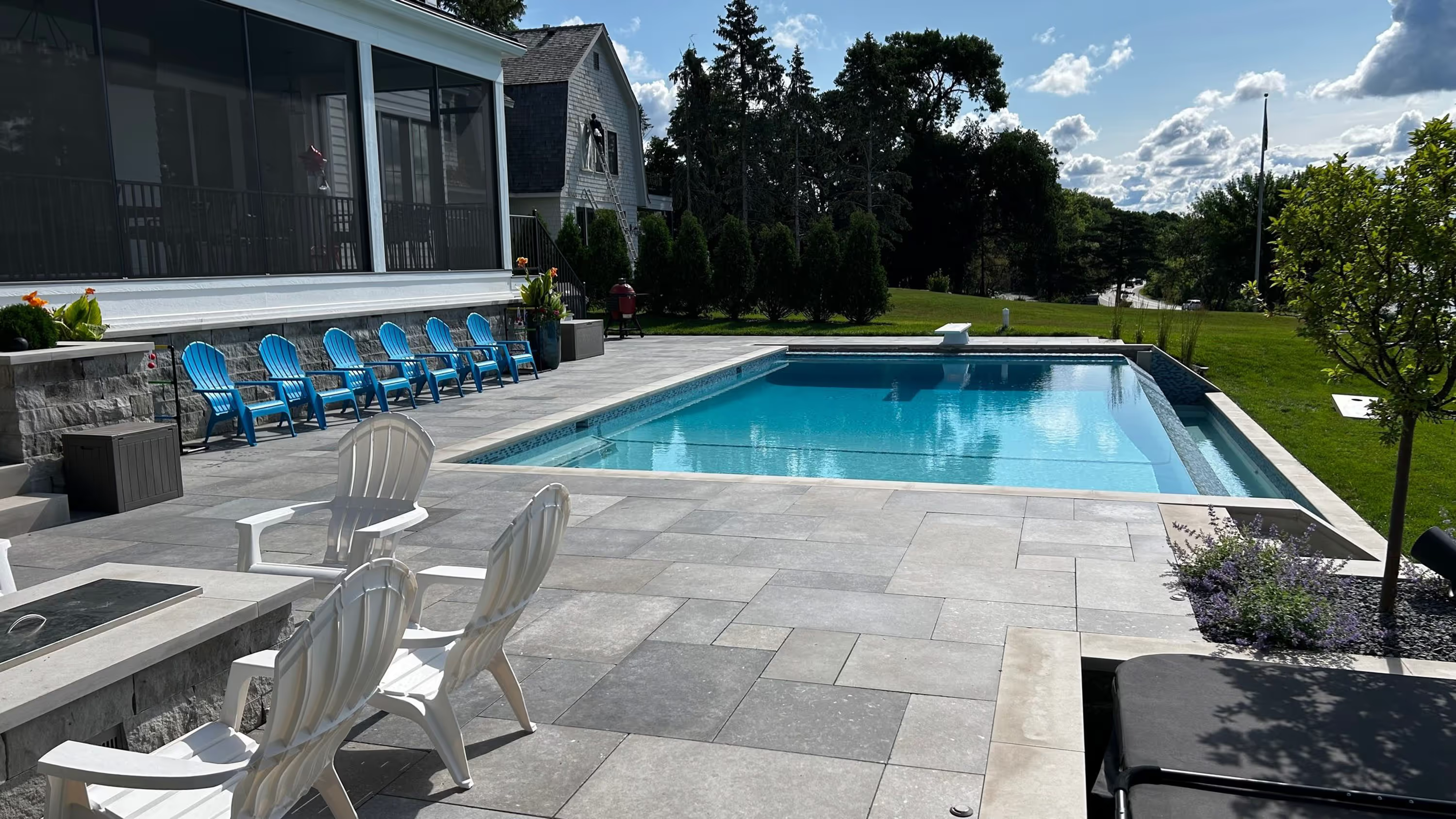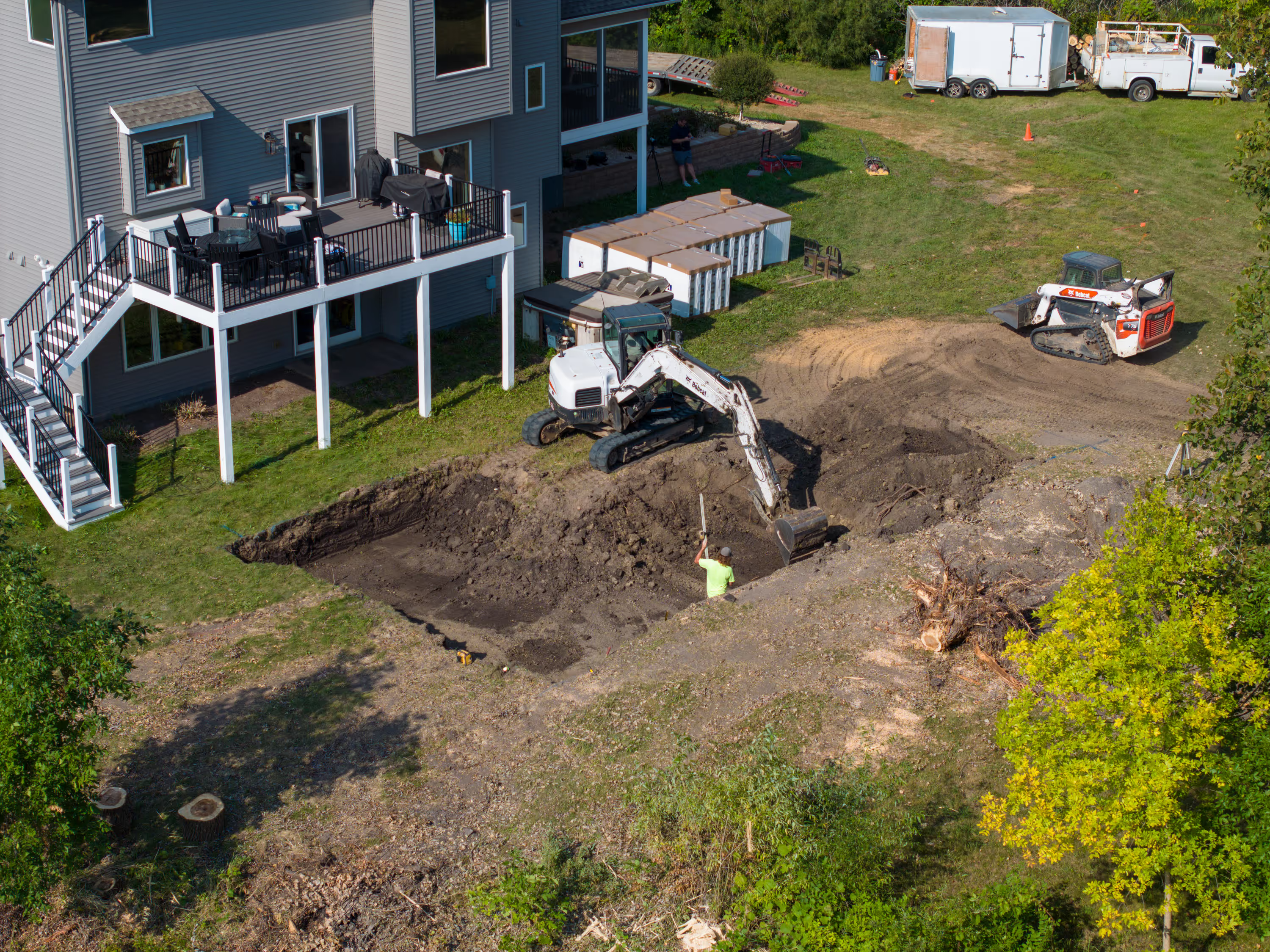Planning to build a backyard swimming pool in Minnesota? Congratulations on taking this exciting step toward transforming your property into a private resort! But before you break ground, there's a critical aspect of pool ownership that many homeowners overlook until it's too late: insurance.
The truth is, adding a swimming pool to your property fundamentally changes your insurance needs, requirements, and costs. Failing to properly update your homeowner's insurance before or immediately after pool installation can leave you exposed to devastating financial liability—and in worst-case scenarios, your insurance company might even deny coverage for pool-related incidents if you didn't properly notify them.
This comprehensive guide will walk you through everything Minnesota homeowners need to know about pool insurance: what coverage you absolutely must have, how much it will cost, what factors affect your premiums, and how to ensure you're properly protected without overpaying.
Why Pool Insurance Matters: Understanding Your Liability Exposure
Let's start with the sobering reality: Swimming pools represent one of the highest liability risks associated with residential property ownership.
According to the Centers for Disease Control and Prevention (CDC):
- Nearly 4,000 fatal drownings occur in the United States annually
- Children ages 1-4 have the highest drowning rates, with most occurring in residential pools
- For every child who drowns, five more receive emergency care for non-fatal submersion injuries
- Beyond drowning, pool-related slip and fall accidents, diving injuries, and chemical exposure incidents create additional liability exposure
As a Minnesota pool owner, you face potential liability for:
- Injuries or deaths occurring in your pool
- Accidents on pool decking, ladders, or diving boards
- Chemical storage accidents
- Equipment-related injuries
- Injuries to contractors or service providers working on your pool
- Trespasser injuries in certain circumstances (yes, even people who shouldn't be there)
The financial stakes are staggering. Drowning lawsuits commonly result in settlements or judgments ranging from $500,000 to several million dollars. Serious injury cases frequently exceed $1 million. Without adequate insurance, a single pool accident could financially devastate your family, potentially forcing bankruptcy or loss of your home and assets.
This is why understanding and obtaining proper pool insurance isn't optional—it's absolutely essential.
The Foundation: How Pools Affect Your Homeowner's Insurance
Most Minnesota homeowners carry standard homeowner's insurance (HO-3 policy), which provides:
- Dwelling coverage for your home structure
- Personal property coverage for belongings
- Liability coverage for injuries occurring on your property
- Medical payments coverage for minor injuries regardless of fault
When you add a swimming pool, here's what changes:
1. Your Pool Becomes Part of Your Dwelling Coverage
The pool structure itself—the shell, decking, equipment, and permanent fixtures—becomes part of your property that needs coverage for:
- Physical damage from storms, falling trees, or vandalism
- Equipment theft (pumps, heaters, automation systems can be expensive to replace)
- Winterization damage if freezing causes structural issues
- Collapse or structural failure
Most insurance companies will increase your dwelling coverage amount to account for the pool's value. Expect your dwelling coverage to increase by the pool's construction cost minus land value—typically $75,000-$150,000 for quality Minnesota pool installations.
2. Your Liability Coverage Requirements Increase Dramatically
This is where pool insurance becomes critical. Standard homeowner's policies typically include $100,000-$300,000 in liability coverage. This is grossly inadequate for pool owners.
Insurance industry experts and legal professionals universally recommend pool owners carry minimum $500,000 liability coverage, with $1 million or more being the prudent standard.
Why such high amounts? Consider:
- Average drowning lawsuit settlements: $500,000-$2,000,000+
- Serious injury cases (paralysis, brain damage): $1,000,000-$5,000,000+
- Legal defense costs alone can exceed $100,000 even if you win the case
- Multiple injured parties can result in multiple claims from a single incident
Most standard policies won't provide adequate protection for pool owners without specific upgrades.
3. Premium Increases Are Inevitable
Adding a pool to your property will increase your homeowner's insurance premiums. Minnesota homeowners typically see 10-25% increases depending on various factors we'll discuss below.
Example premium impacts:
- Current annual premium: $1,500
- Estimated increase: 10-25% ($150-$375)
- New annual premium: $1,650-$1,875
While this represents a significant increase, it's a small price to pay for proper protection against catastrophic liability exposure.
4. You MUST Notify Your Insurance Company
This is absolutely critical: You are legally and contractually obligated to notify your homeowner's insurance company when you add a swimming pool to your property.
Failure to notify your insurer can result in:
- Denial of any pool-related claims
- Policy cancellation or non-renewal
- Denial of coverage for other property damage if the insurer determines you violated policy terms
- Personal financial liability for incidents your insurance would have covered
Timeline for notification:
- Best practice: Notify your insurance company during the planning phase, before construction begins
- Required: Notify immediately upon pool completion or as soon as it becomes usable
- Don't wait: Some insurers require notification before the pool is filled with water
Contact your insurance agent or company before signing any pool construction contracts to understand their specific requirements and ensure continuous coverage throughout the construction and ownership period.
Essential Insurance Coverage Types for Minnesota Pool Owners
Now let's break down the specific types of insurance coverage you need:
1. Enhanced Liability Coverage (The Non-Negotiable Requirement)
What it is: Liability coverage pays for bodily injury or property damage you're legally responsible for, including legal defense costs.
Standard coverage: Most homeowner's policies include $100,000-$300,000Recommended for pool owners: Minimum $500,000, ideally $1,000,000
What liability coverage pays for:
- Medical expenses for injured parties
- Legal defense costs (even if you're not found liable)
- Court judgments or settlements
- Lost wages for injured parties
- Pain and suffering awards
- Rehabilitation costs for serious injuries
How to increase liability coverage:Option 1: Increase your homeowner's policy liability limits (typically costs $50-$150 annually per $100,000 increase)Option 2: Add an umbrella policy (discussed below—often the most cost-effective option)
Cost example:
- Increasing from $300,000 to $500,000 liability: +$75-$125 annually
- Increasing from $300,000 to $1,000,000 liability: +$150-$250 annually
2. Umbrella Liability Policy (Highly Recommended)
What it is: An umbrella policy provides additional liability coverage beyond your homeowner's policy limits. It "sits on top" of your existing coverage and kicks in when your primary policy limits are exhausted.
Typical coverage amounts: $1 million to $5 millionCost: Surprisingly affordable—often $150-$300 annually for $1 million coverage
Why umbrella policies are ideal for pool owners:
- Cost-effective way to reach $1 million+ total liability coverage
- Covers multiple properties and vehicles under one policy
- Provides broader coverage than standard homeowner's policies
- Protects assets beyond your home (savings, investments, future earnings)
- Often includes coverage for libel, slander, and other personal liability exposures
Example coverage stack:
- Homeowner's liability: $300,000
- Umbrella policy: $1,000,000
- Total liability protection: $1,300,000
Cost comparison:
- Increasing homeowner's liability to $1M: +$400-$600 annually
- Adding $1M umbrella policy: +$150-$300 annually
- Umbrella saves $100-$300+ per year while providing better coverage
For most Minnesota pool owners, a $1 million umbrella policy combined with standard homeowner's liability represents the optimal balance of protection and cost.
3. Medical Payments Coverage
What it is: Covers medical expenses for people injured on your property regardless of fault, typically up to $1,000-$5,000 per incident.
Why it matters for pools:
- Addresses minor injuries without triggering liability claims
- Shows good faith effort to help injured parties
- Can prevent minor incidents from escalating to lawsuits
- Covers immediate emergency room visits, urgent care, or ambulance costs
Recommended amount for pool owners: Increase to $5,000-$10,000 if availableCost: Minimal—usually $10-$30 annually for increased coverage
Real-world example: A neighbor's child slips on your pool deck and breaks an arm. Medical payments coverage pays the $3,500 emergency room bill regardless of whether you were negligent. This goodwill gesture often prevents the family from pursuing a larger liability claim.
4. Property/Dwelling Coverage for the Pool Structure
What it is: Coverage for physical damage to the pool structure, equipment, and related improvements.
What it covers:
- Storm damage (wind, hail, falling trees)
- Vandalism or malicious mischief
- Fire damage
- Theft of equipment (pumps, heaters, automation systems)
- Accidental damage (vehicle strikes, etc.)
What it typically does NOT cover:
- Normal wear and tear
- Lack of maintenance
- Freeze damage from improper winterization (may be covered with proper maintenance documentation)
- Intentional damage
- Ground movement/settling (unless caused by covered peril)
Recommended approach:
- Ensure your dwelling coverage amount includes the pool's construction cost
- Document the pool's value with construction invoices and receipts
- Photograph the pool and equipment for claims documentation
- Maintain records of all maintenance and repairs
Cost impact: Automatically included when you increase dwelling coverage—no separate premium, but dwelling coverage increases proportionally.
5. Pool Equipment and Personal Property Coverage
What it is: Coverage for non-permanent pool equipment and accessories.
Items to consider:
- Pool furniture and loungers
- Umbrellas and shade structures
- Pool toys and recreational equipment
- Pool cleaning tools and supplies
- Removable safety equipment
- Outdoor kitchens or bars near the pool
Coverage location: Usually falls under your personal property coverage
Recommended: Review personal property limits to ensure adequate coverage for pool-related items
Special considerations: High-value items (expensive outdoor furniture, grills, etc.) may require scheduled personal property endorsements
6. Additional Living Expenses Coverage
What it is: Pays for temporary housing if your home becomes uninhabitable due to a covered loss.
Pool relevance: If a major pool-related incident (chemical explosion, equipment fire, etc.) makes your home temporarily unlivable, this coverage pays for:
- Hotel or rental housing
- Increased food costs
- Storage for belongings
- Pet boarding if necessary
Recommended: Ensure adequate limits—60-80% of dwelling coverage is typical
Factors That Affect Your Pool Insurance Costs in Minnesota
Not all pool owners pay the same insurance premiums. Understanding what affects your costs helps you potentially reduce them:
1. Pool Type and Construction Method
Inground vs. Above-Ground:
- Inground pools increase premiums more significantly (10-25%) because they're permanent structures with higher liability risk
- Above-ground pools might increase premiums 5-15% depending on size and depth
- Inground pools add more property value, increasing dwelling coverage needs
Construction Quality:
- ICF (Insulated Concrete Form) pools from Plan Pools may receive favorable consideration because superior construction reduces structural failure risk
- Quality construction with proper permits demonstrates responsible ownership
- Well-documented professional installation helps claims processes
Pool Size and Depth:
- Larger pools (20'x40' vs. 16'x32') may increase premiums slightly
- Deeper pools (8-10 feet) carry higher diving injury liability risk
- Irregular shapes with multiple depth zones increase complexity
Pool Features:
- Diving boards increase premiums 5-15% due to increased injury risk
- Water slides face similar increases
- Waterfalls and rock features might slightly increase premiums
- Spas and hot tubs may be evaluated separately
2. Safety Features (Can REDUCE Premiums)
Insurance companies reward safety measures that reduce risk:
Pool Fencing (Often Required):
- Self-closing, self-latching gates
- Minimum height requirements (typically 4-6 feet depending on municipality)
- Non-climbable design
- Complete enclosure separate from house
Potential premium reduction: 5-10% with proper fencing
Safety Covers:
- Automatic safety covers that meet ASTM standards
- Manual safety covers properly installed and used
- Winter covers that prevent access
Potential premium reduction: 5-15% depending on cover type
Pool Alarms:
- Surface wave detection alarms
- Subsurface motion detection systems
- Gate alarms that sound when opened
- Wearable alarm systems for children
Potential premium reduction: 2-5% per alarm type
Security Lighting:
- Motion-activated lighting around pool area
- Underwater lighting for night visibility
- Perimeter lighting for overall security
Other safety equipment:
- Rescue equipment (ring buoys, reaching poles) properly mounted
- Posted safety rules and depth markers
- Anti-slip deck treatments
- Proper electrical GFI protection
Document all safety features: Provide photos and receipts to your insurance company to maximize potential discounts.
3. Your Claims History and Credit Score
Like all insurance, your personal history affects premiums:
Claims history impact:
- Recent claims (past 3-5 years) increase premiums
- Frequency matters more than severity—multiple small claims hurt more than one large claim
- Non-pool claims still affect overall premium calculations
Credit-based insurance scores:
- Minnesota allows insurers to use credit information in rating
- Better credit typically results in lower premiums (10-30% difference)
- Maintain good credit to optimize insurance costs
4. Location Within Minnesota
Geographic factors affect pool insurance costs:
Urban vs. Rural:
- Urban areas (Minneapolis, St. Paul, suburbs) typically have higher premiums due to increased liability exposure and property values
- Rural areas may have lower premiums but could face challenges if fire/emergency services are distant
Crime rates:
- Higher-crime areas see increased premiums due to vandalism/theft risk
- Gated communities or neighborhoods with low crime may receive favorable rates
Municipality requirements:
- Cities with stricter safety ordinances might result in lower premiums because enforced safety standards reduce risk
- Well-enforced building codes provide insurer confidence
Proximity to fire protection:
- Distance from fire stations and fire hydrants affects all homeowner's insurance
- Pool owners benefit from closer proximity due to chemical/equipment fire risks
5. Pool Usage and Access
How you use your pool affects risk assessment:
Private family use:
- Standard rating—pool used only by household members and invited guests
- Occasional gatherings with responsible adult supervision
Frequent entertaining:
- Large regular gatherings may increase premiums
- Consider additional event liability coverage for pool parties exceeding 25-30 guests
Rental property or vacation rentals:
- Short-term rentals with pool access dramatically increase premiums (25-50%+)
- May require commercial or specialty vacation rental policies
- Many insurers exclude coverage for rental situations without proper disclosure
Home business considerations:
- If you operate a home business, ensure pool liability is addressed
- Swimming lessons, parties, or other pool-related business activities require commercial coverage
6. Your Overall Insurance Profile
Bundling benefits:
- Combining homeowner's and auto insurance with the same company typically provides 10-25% multi-policy discount
- Adding umbrella policy through the same insurer often provides additional discounts
Loyalty discounts:
- Long-term customers (5+ years) often receive 5-10% loyalty discounts
- Avoid switching insurers frequently unless savings justify losing loyalty benefits
Deductible choices:
- Higher deductibles ($2,500 vs. $1,000) can reduce premiums 10-20%
- Consider your emergency fund capacity when choosing deductibles
Special Insurance Considerations for Minnesota Pool Owners
Minnesota's unique climate and legal environment create specific insurance considerations:
Winter Damage and Freeze-Thaw Issues
The challenge: Minnesota's extreme winter conditions can damage improperly winterized pools.
Coverage questions:
- Is freeze damage covered if proper winterization was performed?
- What documentation is required to prove proper winterization?
- Are structural issues from ground frost covered?
Best practices:
- Document professional winterization services with receipts and dated photos
- Follow manufacturer specifications for equipment storage
- Consider ICF pool construction that better withstands Minnesota's freeze-thaw cycles
- Maintain detailed maintenance logs throughout ownership
Attractive Nuisance Doctrine
Minnesota legal principle: Property owners may be liable for injuries to children who are attracted to dangerous conditions on the property, even if trespassing.
Pool application: Pools are considered "attractive nuisances" because children may be drawn to them without understanding the danger.
Liability exposure: You could be held liable for injuries to neighborhood children who enter your pool area without permission if you failed to take reasonable precautions.
Insurance impact:
- Insurers evaluate your risk under attractive nuisance doctrine
- Proper fencing and security measures are essential for coverage and liability protection
- Document all safety measures to support potential defense
Dram Shop and Social Host Liability
Minnesota law: Social hosts who serve alcohol to visibly intoxicated guests may face liability for subsequent injuries.
Pool parties with alcohol:
- If intoxicated guests injure themselves or others in your pool, you might face liability
- Standard homeowner's policies may not fully cover alcohol-related incidents
- Host liquor liability endorsements are available for additional protection
Best practices:
- Monitor alcohol consumption at pool parties
- Never serve alcohol to minors
- Consider hiring professional bartenders who are trained in responsible service
- Stop serving alcohol well before guests leave or arrange alternative transportation
Contractor and Service Provider Coverage
The issue: Contractors working on your pool (construction, maintenance, repairs) may be injured on your property.
Coverage questions:
- Does your homeowner's policy cover contractor injuries?
- What if the contractor doesn't have adequate workers' compensation insurance?
- Who's responsible for equipment damage during service?
Best practices:
- Verify all contractors carry proper insurance (general liability and workers' compensation)
- Request certificates of insurance naming you as additional insured
- Confirm coverage is active before work begins
- Work with reputable contractors like Plan Pools who maintain comprehensive insurance
Required vs. Recommended Insurance for Minnesota Pools
Let's clarify what's legally required versus what's prudent:
Legally Required by Most Lenders:
If you have a mortgage, your lender likely requires:
- Homeowner's insurance with dwelling coverage including pool value
- Liability coverage minimum amounts (typically $100,000-$300,000)
- Named lender as mortgagee/loss payee on the policy
Required by Most Insurers:
Insurance companies typically require:
- Notification of pool installation before it's filled/used
- Safety fencing meeting local code requirements
- Compliance with local ordinances (permits, inspections, etc.)
- No pre-existing damage or code violations
Not Legally Required But Strongly Recommended:
- $1 million total liability coverage (homeowner's + umbrella)
- Increased medical payments coverage ($5,000-$10,000)
- Safety features beyond minimums (covers, alarms, lighting)
- Umbrella policy for asset protection
- Annual policy review to ensure adequate coverage as property values change
How to Obtain Proper Pool Insurance: Step-by-Step
Follow this process to ensure you're properly protected:
Step 1: Before Construction Begins
Contact your current homeowner's insurance agent:
- Notify them of your plans to build a pool
- Provide preliminary construction details (size, type, features)
- Ask about premium increases and coverage changes
- Understand any safety requirements they'll impose
- Confirm they'll continue covering your property with a pool
If your current insurer won't cover pools or the premium increase is unreasonable:
- Shop for new homeowner's insurance before canceling current coverage
- Ensure new policy is in force before canceling old policy
- Never have a coverage gap
Step 2: During Construction
Understand builder's insurance:
- Reputable contractors like Plan Pools carry comprehensive insurance during construction
- Verify contractor's general liability and workers' compensation coverage
- Confirm you're named as additional insured on contractor's policy
- Understand what contractor's insurance covers vs. what your policy covers
Monitor construction for insurance purposes:
- Document construction progress with photos
- Retain all invoices, permits, and inspection records
- Ensure all work meets or exceeds code requirements
Step 3: Upon Completion
Notify your insurance company immediately:
- Provide final construction details and total cost
- Submit photos of completed pool and safety features
- Update dwelling coverage to include pool value
- Confirm liability coverage is adequate
Request policy updates in writing:
- Obtain updated declarations page showing pool coverage
- Review all coverage amounts and limits
- Confirm effective date of coverage changes
Step 4: Add Umbrella Coverage
If you don't already have umbrella insurance:
- Request quotes from your homeowner's insurer (usually offers best rates)
- Compare costs from 3-5 insurers if necessary
- Ensure umbrella policy coordinates with homeowner's coverage
- Maintain underlying liability limits required by umbrella policy
Step 5: Annual Review Process
Every year before renewal:
- Review coverage amounts—are they still adequate?
- Update property value assessments as needed
- Document safety features and maintenance
- Shop competing quotes every 2-3 years
- Consider increasing liability limits as assets grow
Common Pool Insurance Mistakes Minnesota Homeowners Make
Avoid these costly errors:
Mistake #1: Failing to Notify Insurance Company
The error: Assuming the insurance company will find out or that notification isn't necessary.
The consequence: Claim denial, policy cancellation, or personal liability for uncovered incidents.
The solution: Notify your insurer during planning stages, well before the pool becomes usable.
Mistake #2: Inadequate Liability Coverage
The error: Accepting standard policy limits ($100,000-$300,000) without increasing liability coverage.
The consequence: Insufficient coverage for serious pool-related injuries, potentially leading to personal bankruptcy.
The solution: Increase liability to minimum $500,000, ideally $1 million, preferably through an umbrella policy.
Mistake #3: Skipping Umbrella Insurance
The error: Assuming homeowner's liability is sufficient or that umbrella insurance is too expensive.
The consequence: Asset exposure beyond policy limits; catastrophic financial loss from major incident.
The solution: Add $1-2 million umbrella policy for $150-$300 annually—minimal cost for significant protection.
Mistake #4: Neglecting Safety Features
The error: Installing minimum required safety features or delaying installation of fencing, covers, or alarms.
The consequence: Higher premiums, potential coverage issues, and most importantly, increased injury risk.
The solution: Install comprehensive safety features from day one; document everything for potential premium discounts.
Mistake #5: Not Shopping for Coverage
The error: Accepting the first quote or price increase without comparing alternatives.
The consequence: Overpaying for coverage by 20-40% or more.
The solution: Obtain quotes from at least 3-5 insurers when adding a pool; compare coverage levels, not just price.
Mistake #6: Inadequate Documentation
The error: Failing to document pool value, safety features, and maintenance.
The consequence: Claim disputes, reduced settlements, or denied claims.
The solution: Maintain comprehensive records:
- Construction invoices and receipts
- Permits and inspection reports
- Photos of completed pool and safety features
- Maintenance logs and service records
- Equipment manuals and warranties
Mistake #7: Not Understanding Exclusions
The error: Assuming all pool-related incidents are covered without reading policy exclusions.
The consequence: Surprise when specific incidents aren't covered.
The solution: Review policy exclusions carefully; ask questions about:
- Intentional acts
- Business/rental use
- Certain diving injuries
- Alcohol-related incidents
- Maintenance-related damage
Cost Summary: What to Budget for Pool Insurance
Let's put all the insurance costs together so you can budget accurately:
Initial Premium Increase (Annual)
Base homeowner's insurance increase:
- 10-25% premium increase: +$150-$375 annually
- (Based on $1,500 current premium)
Enhanced liability coverage:
- Increase to $500,000: +$75-$125 annually
- Increase to $1,000,000: +$150-$250 annually
OR (More cost-effective)
Umbrella policy:
- $1 million coverage: +$150-$300 annually
- $2 million coverage: +$200-$400 annually
Medical payments increase:
- Increase to $5,000-$10,000: +$10-$30 annually
Safety feature discounts:
- Proper fencing: -5-10% (savings of $75-$150)
- Safety cover: -5-15% (savings of $75-$225)
- Alarms and lighting: -2-5% (savings of $30-$75)
Total Annual Insurance Cost Increase
Conservative approach (recommended):
- Homeowner's increase: +$200
- $1M umbrella policy: +$250
- Medical payments increase: +$20
- Safety discounts: -$100
- Net annual increase: $370
Budget-conscious approach (minimum recommended):
- Homeowner's increase: +$150
- Increased liability to $500K: +$100
- Net annual increase: $250
Comprehensive approach (maximum protection):
- Homeowner's increase: +$300
- $2M umbrella policy: +$350
- Enhanced medical payments: +$30
- Safety discounts: -$150
- Net annual increase: $530
Perspective on Costs
These insurance costs represent:
- $21-$45 per month for comprehensive protection
- 1-2% of total annual pool operating costs
- 0.2-0.4% of total pool construction investment annually
- Infinitesimal compared to potential liability exposure
The bottom line: Proper insurance is one of the least expensive aspects of pool ownership and arguably the most important.
Working with Insurance Agents: Questions to Ask
When discussing pool coverage with insurance agents, ask these specific questions:
Coverage Questions
- "What exactly does my homeowner's policy cover regarding the pool structure and equipment?"
- "What is my current liability coverage limit, and is that adequate for a pool owner?"
- "Do you recommend an umbrella policy, and if so, what coverage amount?"
- "What specific pool-related incidents would NOT be covered under my current policy?"
- "Are there any endorsements or add-ons you recommend for pool owners?"
- "How does my policy handle injuries to contractors or service providers working on my pool?"
Cost and Premium Questions
- "What will be the total premium increase for adding this pool to my property?"
- "Are there discounts available for safety features like fencing, covers, or alarms?"
- "How much would an umbrella policy cost, and would that be more cost-effective than increasing my homeowner's liability?"
- "What factors could cause my premium to increase in future years?"
- "Are there any ways to reduce premiums while maintaining adequate coverage?"
Requirements and Restrictions
- "What safety features does your company require for pool coverage?"
- "Are there specific fencing or barrier requirements?"
- "Do you require annual inspections or documentation of pool maintenance?"
- "What happens if I host large gatherings or parties at my pool?"
- "Are there any restrictions on pool features like diving boards or slides?"
Claims and Process Questions
- "What documentation should I maintain regarding my pool?"
- "If I need to file a claim, what's the process specific to pool-related incidents?"
- "What is my deductible for pool-related property damage?"
- "How quickly does your company typically respond to pool-related claims?"
Company-Specific Questions
- "How many pool owners does your company currently insure in Minnesota?"
- "Does your company have specific experience with pool-related claims?"
- "Have you ever denied coverage or cancelled policies due to pool-related issues?"
- "What pool-related claim scenarios have you seen that resulted in significant payouts?"
When to Review and Update Your Pool Insurance
Your insurance needs aren't static. Review and potentially update coverage when:
Annual Review Triggers
- Every policy renewal: Review all coverage amounts and limits
- When property values increase: Ensure dwelling coverage keeps pace with market values
- When you make pool improvements: Adding decks, equipment, or features
- Before each pool season: Confirm coverage is adequate before opening the pool
Life Event Triggers
- Changes in household income or assets: Increase liability protection as wealth grows
- Adding a home business: Ensure business activities near pool don't create coverage gaps
- Planning large events or parties: Consider event liability coverage
- Changes in pool use patterns: More frequent entertaining requires review
Property Change Triggers
- Installing new safety features: Document for potential premium reductions
- Removing or modifying pool features: Notify insurer of changes
- Home renovations near pool area: Ensure coordination between projects for coverage
- Landscaping changes affecting pool access: Fencing or barrier modifications
Conclusion: Protecting Your Investment and Your Family
Building an inground swimming pool represents one of the largest investments you'll make in your home. Plan Pools' custom installations typically range from $90,000 to $150,000+, and beyond the financial investment, your pool becomes a central part of your family's lifestyle and memories.
Proper insurance protection ensures that your investment—and more importantly, your family's financial security—remains protected should the unthinkable occur.
Your Partner in Pool Excellence
At Plan Pools, we don't just build beautiful, functional swimming pools—we partner with you throughout the entire ownership experience. During your design consultation, we'll discuss insurance considerations and provide documentation that helps streamline your insurance process.
Our ICF construction methodology produces pools that insurance companies recognize as superior quality:
- Better structural integrity reduces failure risk
- Superior safety features align with insurer requirements
- Comprehensive documentation supports proper coverage
- Professional installation ensures code compliance
We've helped hundreds of Minnesota families navigate every aspect of pool ownership, including insurance considerations. Contact us today to schedule your consultation and learn how we can help you create your backyard oasis while ensuring you're properly protected.
Your family's safety and financial security are too important to leave to chance. With proper insurance coverage and a quality pool from Plan Pools, you can enjoy peace of mind along with years of swimming enjoyment.
Related Resources:
